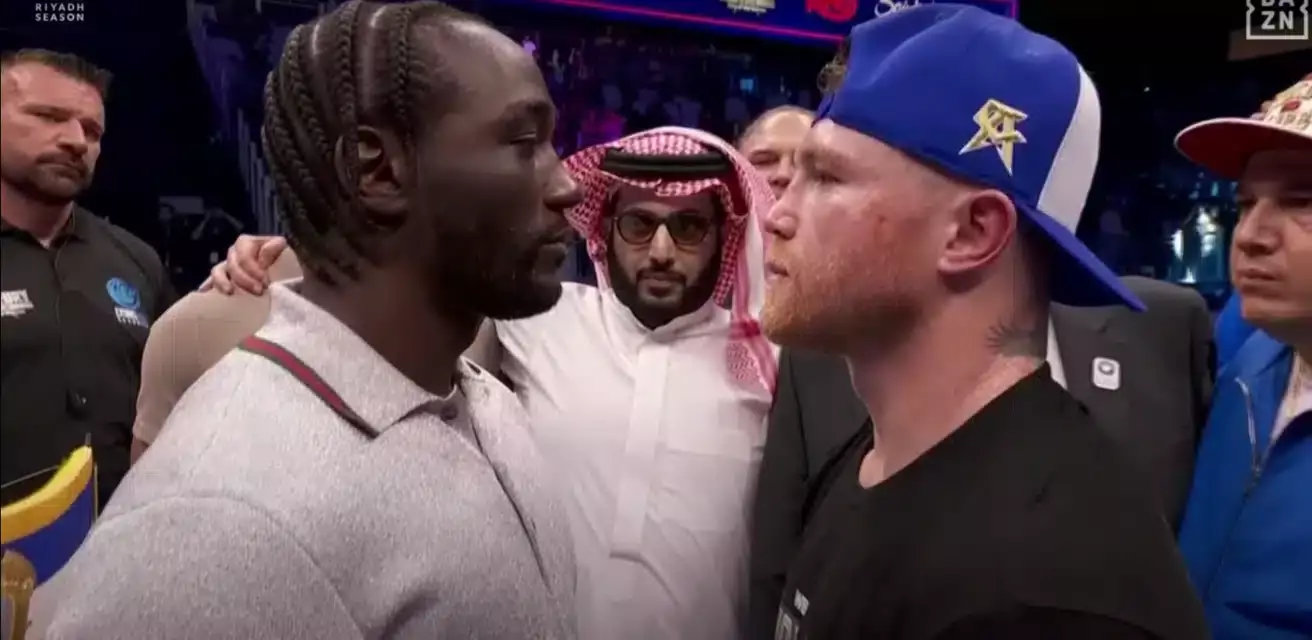The build-up to major boxing events often oscillates between respectful sportsmanship and raw animosity. In the escalating saga of Canelo Alvarez versus Terence Crawford, this dynamic is on full display. Initially, both fighters seemed to embrace a cordial relationship, even sharing dinner, which many fans criticized as “too nice” given the intense competition expected in the ring. However, as the September 13 showdown looms nearer, the atmosphere has shifted palpably. What started as polite exchanges has morphed into heated confrontations, including a physical shove and a volley of verbal barbs. This transformation from amicability to antagonism is more than just spectacle; it sets the psychological tone that may influence the fight itself.
Words as Weapons: The Psychological Chess Match
The verbal sparring between Canelo and Crawford at their third press conference exemplifies how psychological warfare is integral to modern boxing. Canelo’s remark about “a good fighter jumping up against a great fighter” was a thinly veiled jab at Crawford’s stature. Crawford’s retort cleverly turned Canelo’s comment back on him, referencing Canelo’s loss to Dmitry Bivol, arguably labeling Canelo as a “good” rather than “great” fighter. This rhetorical tactic is more than petty banter; it attempts to undermine an opponent’s confidence by scrapping away at his legacy and self-perception. Such psychological gamesmanship often precedes great fights, as fighters try to establish mental dominance even before the first punch is thrown.
The Complex Lens of Legacy and Loss
Canelo’s professional record is only blemished by losses to Floyd Mayweather and Bivol, two of the elite in boxing’s recent history. Nevertheless, the perception of these losses—especially in the first bout against Gennady Golovkin, which many consider controversially judged in Canelo’s favor—adds complexity to evaluating his status as a “great” fighter. Crawford’s accusation that Canelo has “lost every time he stepped up” attempts to paint a narrative of vulnerability against top-tier competition. While harsh, this critique forces fans and analysts to confront the reality that greatness in boxing is not merely about undefeated streaks but also about how a fighter performs in their most challenging moments.
Fan Expectations: The Hunger for a Classic
The growing animosity and fierce exchanges only serve to heighten anticipation for the fight. Fans no longer see just two champions stepping into a ring; they witness rivals carrying bruised pride and personal vendettas that must be settled. The tension promises intensity, drama, and a spectacle that transcends mere competition. With both fighters staking their reputations and egos on the bout, there are strong indications that the September clash could evolve into a modern classic. Canelo himself acknowledges the high stakes and promises fans “a good fight,” emphasizing his confidence and determination to silence critics and opponents alike.
The Role of Promoters and Media in Amplifying Rivalries
While the fighters drive much of the conflict, it’s impossible to ignore the role promoters and media play in escalating tensions. Press conferences, public statements, and social media amplify every insult and shove, transforming what might have been private competitive friction into a global talking point. This environment pushes fighters to engage in posturing and bravado, which may blur the line between genuine hostility and strategic performance. Yet, at its best, this theatricality draws new fans into the sport and creates landmark moments remembered far beyond the fight’s duration.
Why Antagonism Can Elevate the Sport
Some purists might decry the growing nastiness, longing for a time when sportsmanship reigned supreme. However, rivalry and conflict have long been drivers of passion and excellence in boxing. They incentivize fighters to push beyond their limits, to prepare relentlessly, and to perform with heightened focus. The psychological edge gained through verbal dueling or intimidation can be pivotal in close contests. When confronted with a genuine threat that strikes not only the body but also the mind, champions are forced to rise—sometimes to their greatest heights. Canelo vs. Crawford is poised to be a compelling example of this dynamic in action.
Personalities Clashing: A Story Beyond the Ring
Beyond their records and fighting styles, Canelo Alvarez and Terence Crawford are personalities shaped by different paths and cultures, adding layers to their confrontation. Canelo, the Mexican superstar, embodies the passion and resilience of one boxing’s most fervent fanbases, while Crawford’s rise from a quieter Midwest American background reflects a craftsman’s approach to mastery. Their contrasting narratives sharpen the feud — what was initially a respectful meeting between two greats now threatens to boil over into genuine enmity. This personal element introduces relatability and storylines that extend beyond sports analysis and into the realm of cultural and emotional investment for fans worldwide.
The Fight as a Proving Ground
At its core, this fight represents more than just a title unification or a marquee event: it is a proving ground for legacy, resilience, and mental fortitude. Both Canelo and Crawford bring impressive resumes, but both also carry questions about their limits when facing the absolute best. This doesn’t detract from their greatness; rather, it humanizes them. The way each reacts to pressure—both in and out of the ring—will define their narratives for years to come. The insults, the tension, the grudges all feed into this crucible, making the September bout not just a fight but a defining moment in modern boxing history.

